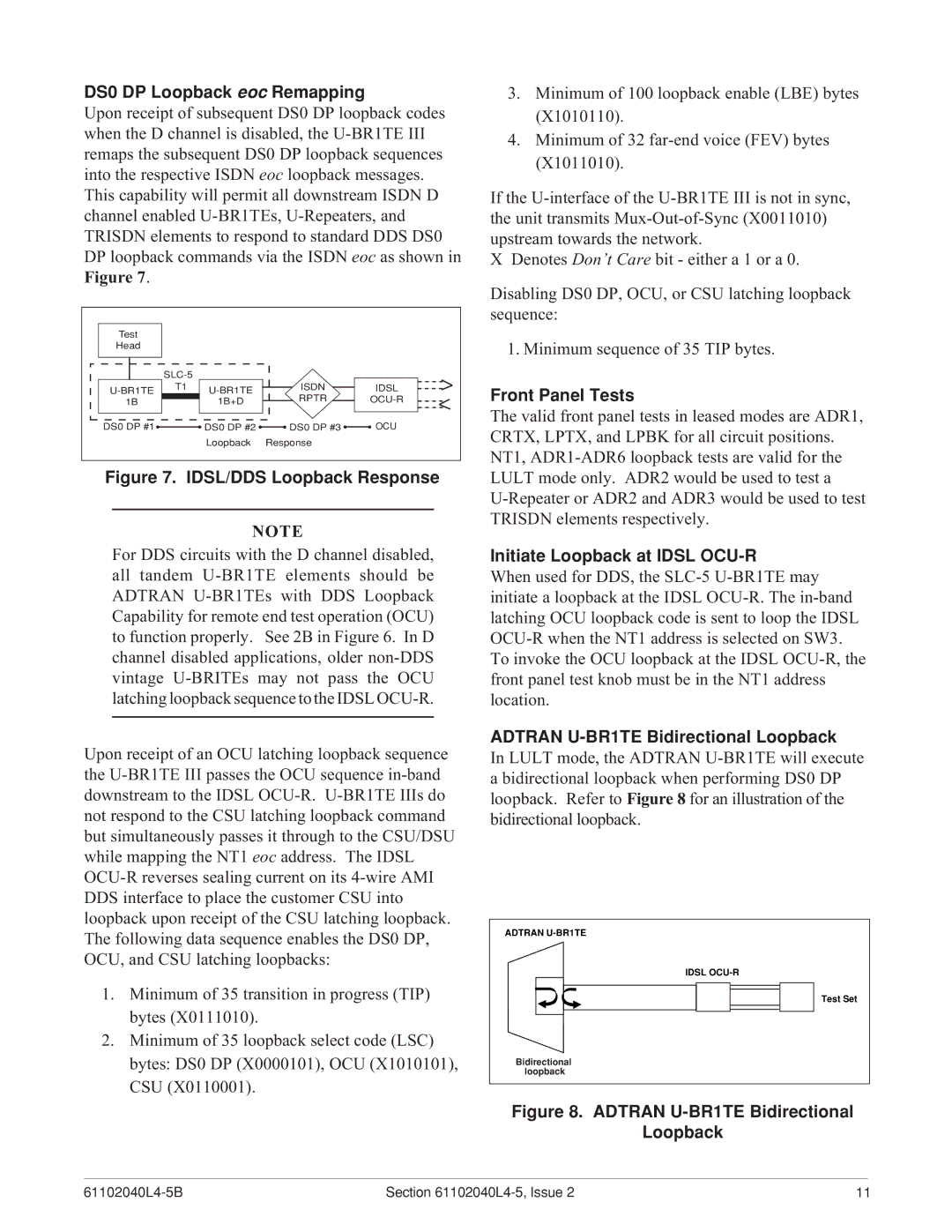SLC-5 U-BR1TE III specifications
The ADTRAN SLC-5 U-BR1TE III is an advanced digital subscriber line (DSL) technology that plays a crucial role in delivering high-speed broadband services to residential and commercial customers. As part of the SLC-5 product line, this device is designed to seamlessly support both traditional TDM and next-generation packet services, ensuring versatility and strong performance in various network configurations.One of the key features of the SLC-5 U-BR1TE III is its ability to support multiple DSL technologies, including ADSL, ADSL2+, VDSL, and VDSL2. This flexibility allows network operators to deploy the most suitable technology based on customer requirements and available infrastructure. By utilizing these DSL technologies, the device provides enhanced data rates, allowing for increased bandwidth and better overall service quality.
The SLC-5 U-BR1TE III is known for its robust architecture, which accommodates up to 48 DSL lines per unit. This high-density capability makes it an attractive option for service providers aiming to optimize their network investments. Additionally, the unit supports various interfaces for integration within existing systems, including T1/E1 and Ethernet, making it easier to connect to core networks without significant upgrades.
Another notable characteristic of the SLC-5 U-BR1TE III is its built-in intelligence, which enables dynamic bandwidth allocation. This feature optimizes how bandwidth is distributed among subscribers to ensure equitable access and smooth service delivery, even during peak usage times. Furthermore, the device supports advanced monitoring and management capabilities, helping operators maintain network performance and address issues proactively.
In terms of deployment, the SLC-5 U-BR1TE III is designed for easy installation in diverse environments, such as central offices or remote locations. Its compact form factor and fan-less design contribute to reduced power consumption and lower operating costs, making it an environmentally friendly choice.
Overall, the ADTRAN SLC-5 U-BR1TE III is an exemplary solution for service providers seeking to enhance their DSL offerings. With its support for multiple DSL technologies, high-density capabilities, dynamic bandwidth management, and ease of deployment, it continues to be a cornerstone in the evolution of broadband connectivity, paving the way for improved user experiences and increased satisfaction.

